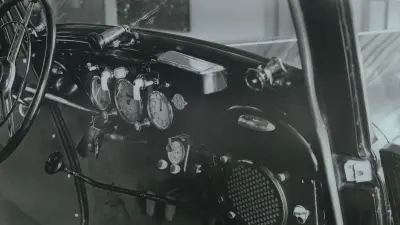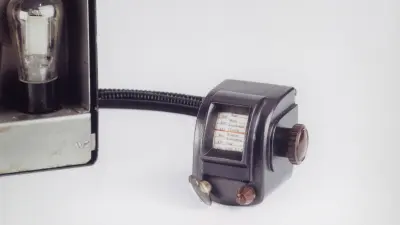Bosch launches Europe’s first car radio

Today, Bosch supplies numerous automakers with car radios or, more accurately, infotainment systems, as there is usually a lot more to them than simply listening to radio programs while on the move – traffic updates and navigation, for example.
Kicked off by a crisis
But what made Bosch first start developing car radios? To a large extent, it was the crisis that hit the car industry in the 1920s. To achieve a more balanced portfolio, the company added new areas to its traditional operations in the automotive technology sector, such as household appliances and power tools.
It also added a Berlin-based radio manufacturer called Ideal that Bosch had, for several years, been supplying with capacitors for home radios. And since it made sense to pool expertise, the radio experts at Ideal and the automotive electrics specialists from Bosch in Stuttgart developed Europe’s first series-produced car radio.
The blue dot

It was called Autosuper 5 and carried the blue dot (“Blauer Punkt”) brand that would go on to be the company and brand name for consumer electronics at Bosch up till 2009. It was a huge 12 kilogram metal device that could only be manhandled into the passenger footwell with difficulty. The glass tubes were still too fragile for most uneven roads, but the engineers were already busy working on more stable successors.
Not just for cars
It was undoubtedly a highlight of the Berlin radio exhibition in August 1932. In the United States, General Motors had already launched a similar device, but until now only experimental models had been available in Europe. With the launch of this radio designed specifically for use on the road, a product was finally available on the market. However, the customer had to be willing to pay the equivalent of an academic’s monthly salary for it – more than 300 German marks. It is no wonder that it was recommended for installation in cars, speedboats, and aircraft.
When installed in a car, the radio could usually only pick up a single broadcast station, despite elaborate antenna designs that ran around the whole roof. However, listening to the news on the road was a pleasure that undeterred customers would not give up on and, in 1935, the engineers incorporated all their painful experience from the new product into the next generation of radios.

Author: Dietrich Kuhlgatz
